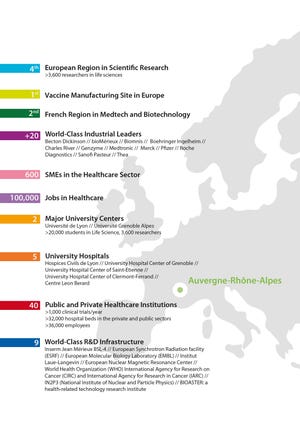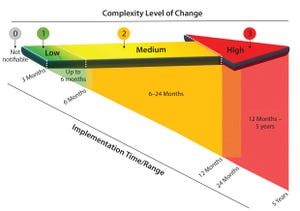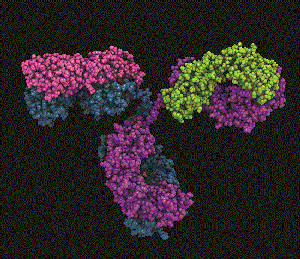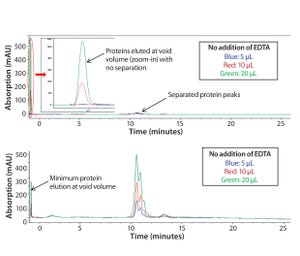The first half of 2017 has been leading us to next issue’s focus on the state of the industry. Although we are not officially calling it our “15th anniversary issue,” that of course is what prompts our focus on progress and future projections. By the time you read this, that issue will be on its way to the printer. So here are my thanks, in advance, to those of you who took time with our related survey. We editors look forward to sharing the results, following up with interviews, and including your comments.
As usual, though, we do try to rock the boat a bit. So the issue is organized around “functional groups” rather than our traditional process divisions. Assuming that the old “silo” mentality truly is fading, we’re emphasizing interconnections across groups based on advances in automation, single-use systems, contract services, analytical sophistication, regulatory harmonization, and industry globalization — among other topics. This plan is open to interpretation, but here’s how we see those groups, al...
Welcome New Editorial Advisor
David Rabuka is global head of research and development in chemical biology at Catalent Biologics, with overall responsibility of overseeing continued research and development of SMARTag technology. He also oversees strategy, resource allocation, and scientific oversight of preclinical and clinical studies. David joined Catalent Biologics following Catalent’s acquisition of Redwood Bioscience Inc., where he was founder, president, and chief scientific officer.
David’s scientific areas of expertise include chemical synthesis; drug delivery; translational research; chemistry, manufacturing, and control (CMC) activities; animal studies; and preclinical and clinical testing. He received a 2008 PhD in chemistry from the University of California at Berkeley in 2003, having served as a Chevron fellow in the laboratory of Professor Carolyn Bertozzi. There, his research included developing and applying Redwood’s platform technology to cell-surface modification. Before pursuing his PhD...
Figure 1: Auvergne-Rhône-Alpes, an innovative territory in the heart of Europe
Lyonbiopole is a French “bio-cluster” based in the Auvergne-Rhône-Alpes region surrounding Lyon (Figure 1). The cluster supports ambitious projects and companies in the broad health industry, counting more than 200 members including Lyonbiopole’s four founders: Sanofi Pasteur (the vaccines division of multinational pharmaceutical company Sanofi), bioMérieux (known worldwide for in vitro diagnostics and microbiological testing), Merial (an animal-health company that merged recently with Boehringer Ingelheim), and Becton Dickinson (supplier of flow cytometers, reagents, tools, and services). The region also is home to 17 research centers (including three hospital university centers), universities, training organizations, and nearly 180 small and midsize businesses (SMBs) engaged in life science. Philippe Archinard (Transgene’s chief executive officer) chairs the organization’s 10-member board, which includes representatives of pr...
Figure 1: Time frames associated with implementing changes of varying complexity; arrows depicting that change complexity can be viewed as a continuum divided into discrete change levels. The diagonal indicates time frames required by recipients of changes before a recipient can qualify the change and accept the changed state.
Current practices for change notification in the biopharmaceutical industry are neither efficient nor conducive to accelerating the adoption of single-use systems (
1
,
2
). Drug manufacturers (end users) often observe that supplier change data packages lack technical content or detail and that the time allowed for change implementation is too short. Occasionally, customers (end users or next tier in supply chain) learn of changes after the fact, possibly even by happenstance. Suppliers, however, can find the potential affect of a change on a customer difficult to understand: The regulatory environment is a murky picture, how drug manufacturers use supplier data is likewise opaque,...
STOCK.ADOBE.COM
A biosimilar biotherapeutic product is similar (but not identical) in terms of quality, safety, and efficacy to an already licensed reference product. Unlike generic small molecules, it is difficult to standardize such inherently complex products based on complicated manufacturing processes. Table 1 describes the main differences between biosimilar and generic drug molecules.
Table 1: Major difference between biosimilars and generic drugs
The global biosimilar market is growing rapidly as patents on blockbuster biologic drugs expire (Table 2) and other healthcare sectors focus on reduction of costs. Biologics are among the highest-cost treatments on the global market today, which implies the need for low-cost alternatives. In emerging markets, biosimilars already offer more affordable prices, which are not only attractive, but indispensable to economies where expensive treatments are not financially feasible (
1
). Interchangeability of biosimilars could have a big impact on drug budgets a...
Figure 1: Chromatograms of Protein F sample tested on a Tosoh Q-STAT column without (top) and with (bottom) 50 mM EDTA added to the sample matrix; injection volume varied from 5 to 10 and 20 µL.
The concept of quality by design (QbD) initially was outlined in ICH Q8 guidance for drug-product development and later in Q11 for drug-substance development (
1
,
2
). Since then, the QbD concept was further expanded to the development of analytical methods. FDA issued a 2015 guidance on analytical procedures and method validation for drugs and biologics (
3
). Although the agency did not explicitly state the requirement for implementation of QbD in analytical method development, the concept is embedded in its section on analytical method development, including these two quotes:
Those expectations are in line with the concept of QbD in ICH Q8 as “a systematic approach to development that begins with predefined objectives and emphasizes product and process understanding and process control, based on sound science...
Figure 1: Conventional and M-pleat pattern
Maximizing filtration-area density is a design strategy to minimize filter footprint and improve filtration process economics. Pleated membrane formats commonly are used to achieve that goal for sterilizing-grade filters operating in dead-end mode (also known as
normal-flow filtration
). Although high-density pleat geometries increase productivity for a device, such formats can present unique challenges. One of the most common concerns is that pleat formats can introduce flow resistance that impedes a device’s filtration efficiency, particularly for high–pleat-density geometries (
1
,
2
). Filtration efficiency can be affected by pleat length, membrane permeability, and thickness and flow characteristics of upstream and downstream supports as well as other aspects of a pleat configuration.
One approach for overcoming those challenges has been the development of an M-pleat pattern that allows for a nearly 100% increase in membrane area over conventional designs ...
BPI’s editor in chief S. Anne Montgomery recently caught up with long-time editorial advisor Hazel Aranha (purification technologies technology expert for Sartorius Stedim Biotech, North America). They discussed a number of topics related to viral safety.
Montgomery:
What is the current thinking regarding virus-safety assurance in biopharmaceutical manufacturing? How is the industry preventing viral contamination?
Aranha:
The “holy grail” of viral safety — absolute freedom from extraneous agents or residual pathogenicity — is a myth. That said, biopharmaceutical products have had an excellent safety record, and we have not had iatrogenic transmission of pathogenic viruses associated with their administration. Our risk mitigation and management approaches for virus-safety assurance — appropriate sourcing, demonstrating process ability to clear viruses, and using in-process controls — have delivered products with excellent safety profiles (from a virological standpoint).
Risk mitigation is at the forefron...
Advanced fluoropolymer materials offer distinct advantages in single-use systems regarding chemical compatibility, extractable levels, and cold-temperature performance. In a 5 April 2017 webcast, Michael W. Johnson (business development engineering manager for life sciences at Entegris) examined data from pilot-scale testing of a new single-use bag system for freezing, storage, and shipping of formulated bulk biologics.
Johnson’s Presentation
Factors restricting disposables use in biopharmaceutical development include bag breakage, concerns over extractables and leachables, and material incompatibility. Bioprocessors want new and improved plastics. Possible material innovations include homogeneous films that eliminate the lamination and adhesives of multiple layers. Such innovations can improve the cost-effectiveness of single-use technology.
Fluoropolymers were developed for challenging applications in which durability, inertness, purity, and cleanliness are important. These polymers retain their chemica...











